Born to Climb
For 25 years, Jason Robertson has been quietly pursuing the most challenging routes to Glacier National Park’s 234 listed summits, ascending many of them solo and in winter. Yet amid the bluster of ‘peak-braggers’ on social media, his unparalleled feats have largely flown under the radar.
By Tristan Scott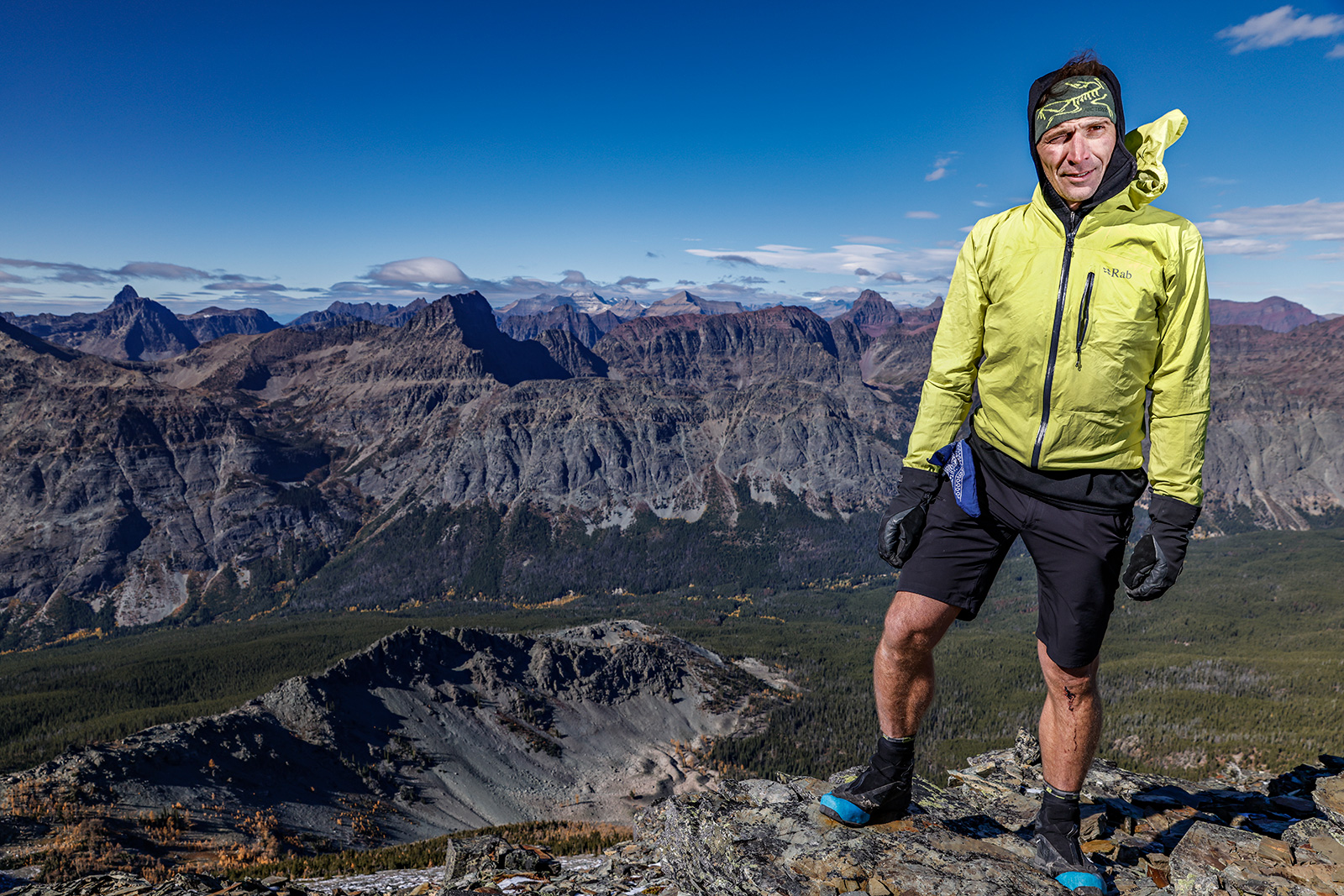
A trident of snow-marbled summits straddles the low-slung stretch of the Continental Divide at Marias Pass, commanding the attention of rubbernecking motorists skirting the southern boundary of Glacier National Park.
For Jason Robertson, the jagged expanse of Little Dog, Summit and Calf Robe mountains evokes an unrelenting impulse to step into the light of the unknown, their summits first coming into his view nearly 40 years ago, when as a young child his grandparents regularly made the journey over the pass from Great Falls to Essex, where his family owned a small cabin near the base of Snowslip Mountain.
“Nowadays, we call them the ‘town peaks’ because they’re so close to the [East Glacier Park] Village, but as a kid they were my Mount Everest,” Robertson said. “I would stare at them and wonder if they’d been climbed, or if they were even possible to climb. Summit Mountain and Little Dog, in particular, just seemed unattainable to me.”
In 1996, as a newly minted high school graduate, Robertson moved from Great Falls to East Glacier, where he quickly discovered that the summits were indeed attainable, as are all of the park’s 234 peaks listed by the Glacier Mountaineering Society, including its five “technical-only” climbs. He’s climbed them all, including Glacier’s six highest summits in winter, deploying a mix of rock, ice and ski-mountaineering techniques to ascend and descend Cleveland, Kintla, Merritt, Jackson, Stimson, and Siyeh, all of which loom above 10,000 feet in elevation.

He’s likely the first person to accomplish the feat, but Robertson, 42, isn’t known for broadcasting his climbing achievements.
“What he’s done is nuts, but he won’t advertise those accomplishments, short of sending me the occasional cool photo from a mountain top,” says Matt Holloway, an accomplished local climber who first met Robertson in 2003 while living in Babb. “He’s not self-aggrandizing about his climbing. He may be the first person to do certain things, and he’s set a high bar, but we don’t really talk about that. He’s just hyped on the immediate. Actually, he’s hyped on whatever the day’s goal is, even if it’s a so-called ‘lesser’ peak that he’s climbed a hundred times.”
In 2005, Holloway recalls joining Robertson on an expedition to scout the towering horn of Mount St. Nicholas in Glacier’s remote southwest corner, considered by many to be the park’s premier multi-pitch technical route, requiring ropes and a rack of protective gear for even the most intrepid climbers — and this after an 18-mile approach. When they reached the Great Notch, above which the route goes at Class 5, a technical ascent that only experienced climbers attempt, Holloway decided he was content to relax and soak in the view.
“I had not climbed St. Nick at that point and had no technical climbing experience to speak of,” Holloway said. “We didn’t have a rope but Jason just went for it. I remember sitting on the notch taking photos and watching him free solo St. Nick, which is something I wouldn’t want to do even if I had the skills. But he made it look effortless.”
By Robertson’s count, he’s climbed Mount St. Nicholas nine times, free-soloing it on five occasions, even though he prefers climbing with company; he just can’t always find a partner who can keep up, or who has the scheduling freedom, ambition and mental tenacity to embark on a 23-hour climb. Or venture into the park’s most remote corners in the dead of winter for a week or two, waiting for a weather window wide enough to climb Glacier’s tallest mountains.
“I am not a summit-at-all-costs climber, and I am a lot more focused on living to climb another day,” Robertson said. “It’s a fine line. But one of the things I’ve learned about solo climbing is that fast is safe, and I’ve been able to escape some dangerous situations due to my self-reliance and confidence as a solo-climber and skier.”
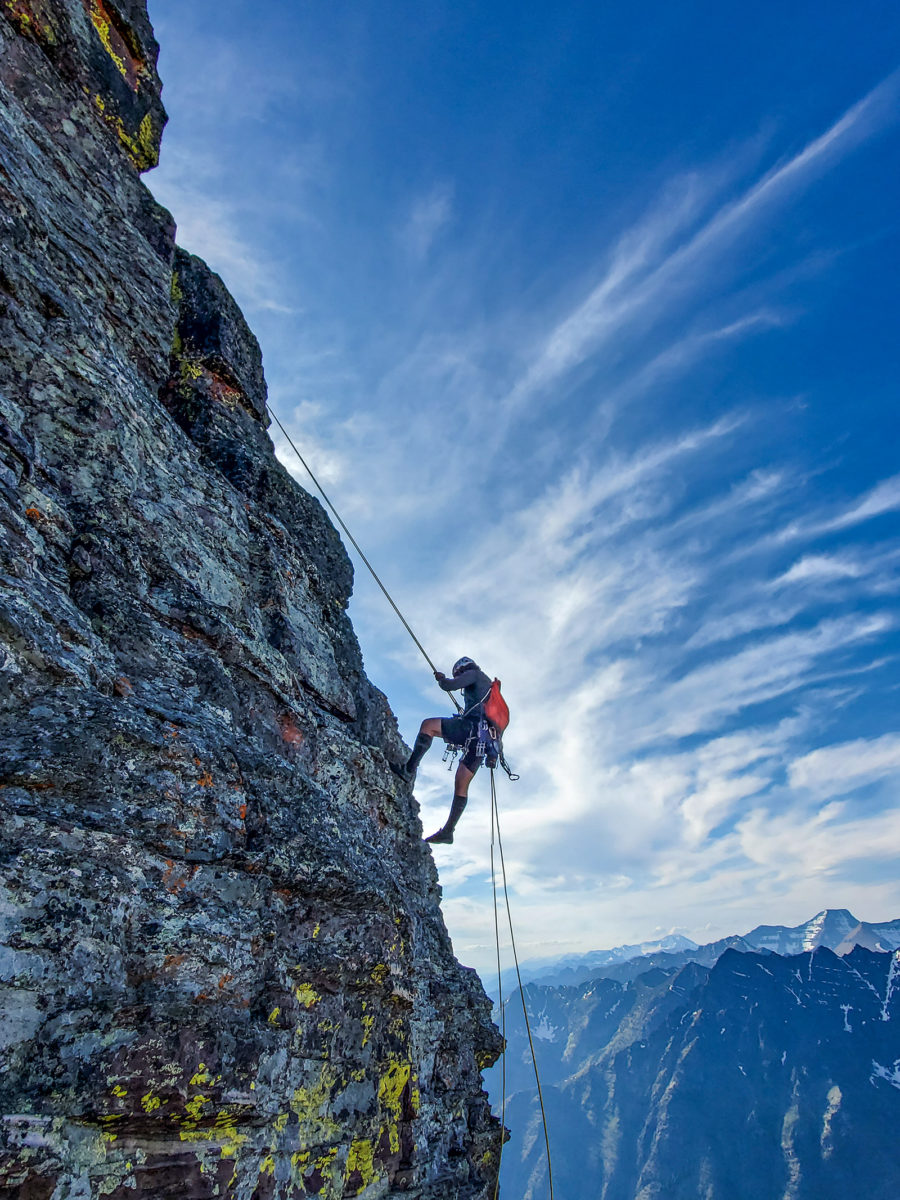
Anyone who spends enough time scrambling in Glacier’s alpine country is bound to hear of Robertson, either by encountering his cryptic inscriptions in summit registers or while swapping beta with other climbers at the bar. But his mastery as a mountaineer isn’t reflected in the written record of climbing in Glacier National Park, due in part to the enduring “unpublished” climbing philosophy adopted by the trailblazing pioneers who charted some of the earliest routes to Glacier’s summits.
From the inception of Robertson’s peak-bagging career, he obsessively documented his climbs in the margins of J. Gordon Edwards’ timeless peak-bagging manual, “A Climber’s Guide to Glacier National Park.” But his climbing became so prolific that he filled nine copies of the climbing tome, and now mostly records his trips in a calendar.
His first major climbing goal in the park was to climb the park’s six highest summits in winter, an objective he pursued with such zeal that he didn’t include a Dec. 16 ascent of Kintla because it fell just short of solstice. When he describes his most memorable moments in the park, many of them occurred during those solo expeditions, when the park’s wilderness is at once muted and enhanced by the weight of winter.
“I have never felt so far away from people in my life than while skiing across Glenns Lake in the Belly River under a full moon with no headlamp,” Robertson said. “I felt like I was on the moon.”
By 2020, only two of Glacier’s 234 peaks remained for Robertson to climb, both of them technical: the Citadel Spire and the Lithoid Cusp, the latter of which he climbed last summer with a partner before returning in 2021 for a successful free-solo effort, climbing alone and without a rope.
Prior to his successful 2020 climb of Citadel Spire, a daunting 350-foot pinnacle in the park’s Goat Haunt area, which Robertson nicknamed “the Jenga tower of death,” he obsessively researched it, reaching out to more experienced climbers and scouring the internet for route beta. When he finally tracked down a copy of a climbing magazine from the 1960s that included a trip report of the spire’s first ascent, some of the pages were missing.
“It just said ‘loose, chossy rock. Lots of falling rock,'” Robertson said of the route description. “So we didn’t have a lot of beta to go on.”
“Citadel Spire was my last peak in the park, and during my first attempt three years ago I started climbing and a big buttress collapsed,” Robertson said. “We bailed, and then I bailed again the next morning. So it was sitting in the back of my mind and I started putting a lot of pressure on myself. At the same time, I made a conscious effort to not let that pressure affect my climbing.”
To prepare for the climb, he trained every day, either in the park or by soloing the great stone chimneys at East Glacier Park Lodge.
“I would just solo up and down, up and down, until I had racked up 1,500 feet of vert, every single day,” Robertson recalled. “I got to the point where I didn’t feel the ground below me. It just kind of disappeared. It could have been five feet below me or 5,000 feet.”
After his successful climb of Citadel Spire last summer, he didn’t showboat, but instead began planning his next big adventure.
“People keep asking me what I’m going to do now that I’ve climbed them all, but there’s still so much left to explore in the park. I love exploring new places, but even if it’s a mountain that I have been up 10 times, you can do the same route in Glacier 10 different ways,” he said. “For me, a big part of exploring is exploring my limits, and I still haven’t found my limit.”
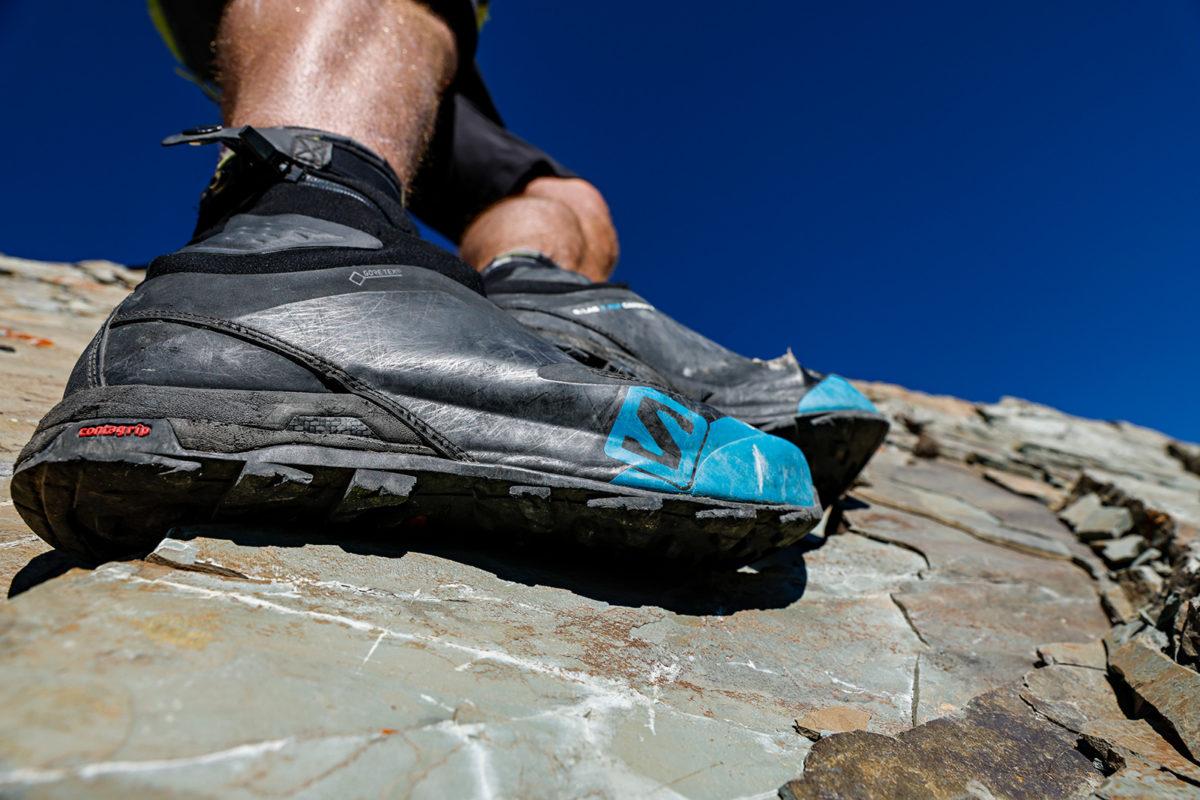
According to climbers who know him, Robertson is one of the most accomplished climbers you’ve never heard of, and he doesn’t mind keeping it that way.
“He really respects the climbers who came before him, and he’s not innately self-promotional so I think the idea of seeking recognition really turns him off,” Holloway said. “It diminishes the magic and the imagination and the mystery of these wild places. The idea of conquering or of success isn’t something we should take into the mountains. It’s something we should all leave to the stock market.”
Photographer Tony Bynum, who serves as president of the Professional Outdoor Media Association and has chronicled the region’s mountain athletes for years, said it’s nothing short of remarkable that a climber of Robertson’s caliber hasn’t gained a greater degree of recognition or fame.
“I still have a hard time believing that anyone can do what he has done in the short amount of time that he’s done it,” Bynum said. “He climbed all six of the 10,000-footers in like five years or less. I’ve photographed him from the highway but he’s such an animal I’ve never tried to keep up with him. I’m very surprised he hasn’t developed a higher profile and landed on the cover of Men’s Journal or Outside Magazine, because he’s that level of adventurist. But outside of a small group in and around East Glacier, he never talks about it.”
Late last month, bracing against the bite of an east-side breeze on a spectacular late-September morning, Robertson tucked a strand of shoulder-length hair into his headband and flashed up a rock chimney, ascending the southwest ridge off Little Dog Mountain with aplomb. Moving at a wolverine’s pace, Robertson pauses just long enough to coax out the labyrinthine passageway’s next move before bending his leg like a lightning bolt and surging upward, his tanned calves all rippling sinew.
He’s climbed Little Dog dozens of times, and yet his enthusiasm for the day’s adventure is as potent as a little kid’s.
“I just loving climbing mountains,” Robertson says for the fifth or sixth time. “For as long as I can remember, I’ve been spellbound by them, and especially by Glacier. I feel like I’ve gotten to know the park very intimately, which is important to me.”
One day, after a debate over how many of Glacier’s peaks it would be possible to climb in a single 24-hour push, Robertson set out at 2 a.m. and traversed a ridgeline from Running Rabbit Mountain along the Middle Fork Flathead River, climbing 16 peaks in 22 hours and finishing at Scenic Point in Two Medicine.
“It’s been fun to see what all I can do in a single day,” Robertson said. “I climbed both St. Nick and Doody in a single day, Vulture in a single day, Lithoid Cusp in a day. My mission was to just day-trip everything in Glacier.”
Hearing Robertson casually recite the names of the peaks he’s climbed, it’s difficult to comprehend their level of difficulty and degree of remoteness.
Indeed, Robertson’s closest friends chide him for not branching out beyond the park’s 1 million acres and venturing further afield. Perhaps the teasing finally took its toll, because this past summer, having finally dispatched the last of Glacier’s elusive technical peaks when he climbed the Citadel Spire in a single day, Robertson took a road trip.
Robertson insists he was driven out of the valley by wildfire smoke, but regardless, along the way he climbed all of the high points in California, Colorado, Washington, Wyoming, Utah, New Mexico, Nevada, Idaho, Arizona, Oregon, and Montana.
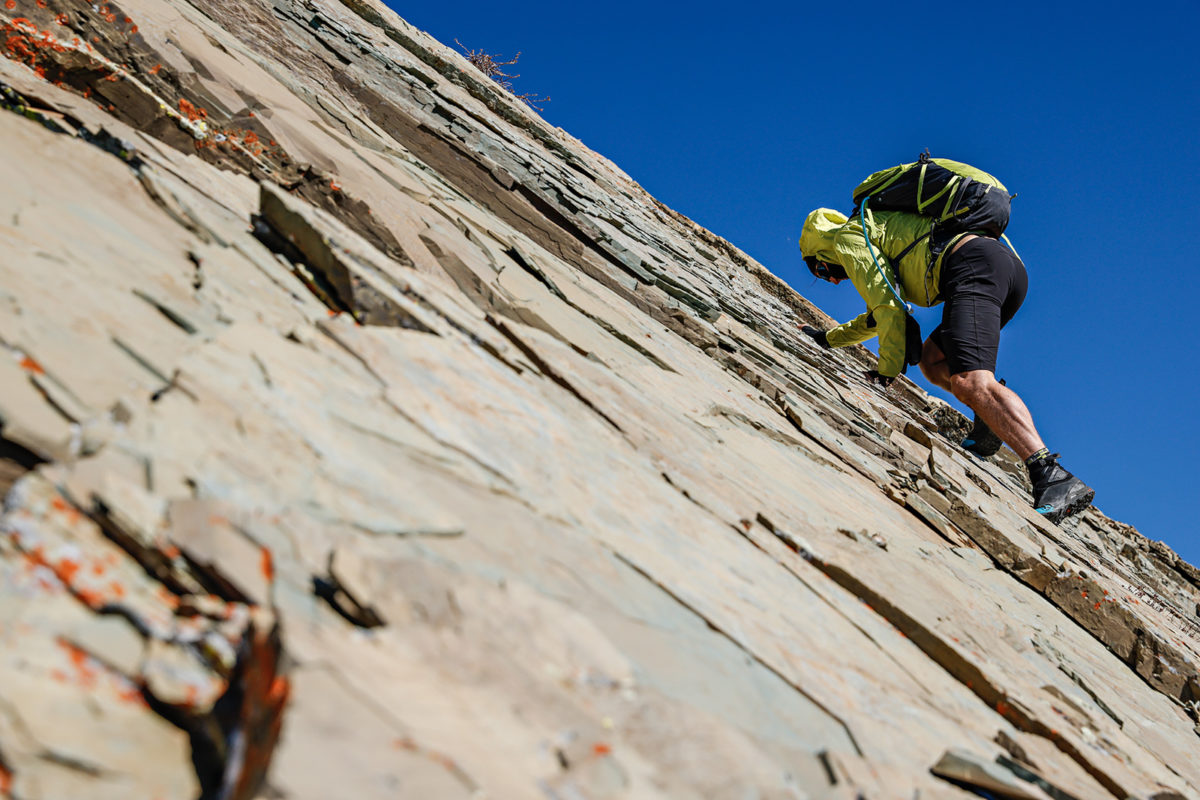
To accommodate his climbing passion, Robertson has worked most of his life as a woodworker, cabinetmaker and builder, constructing his own schedule to climb and train as much as possible. Born in Shelby and raised by a single mother, he grew up in Great Falls and moved to East Glacier when he was 19, taking a job as a bartender and immediately getting plugged into the climbing community.
“I just happened to meet a lot of people who climbed mountains and I started tagging along,” he said. “My second day out in the park I climbed Piegan, Pollock and Bishop’s Cap. At one point, I had to do some steep down-climbing that made the others uncomfortable, and all I could think was, ‘this is really fun.’”
By the next season, he’d fallen in with legendary Glacier climber Marty Connelly, who Robertson credits as his most influential mentor. To pay it forward, Robertson has taken care to counsel younger climbers interested in taking their ability to the next level.
“Jason’s been a huge inspiration to me since I started climbing out here 15 seasons ago,” said Ben Darce, a local climber and musician who divides his time between East Glacier and Whitefish. In 2015, Darce stood on the 22,349-foot summit of Ama Dablam in eastern Nepal, which is part of the Himalayan range. “I definitely wouldn’t have pushed myself to that level it hadn’t been for Jason.”
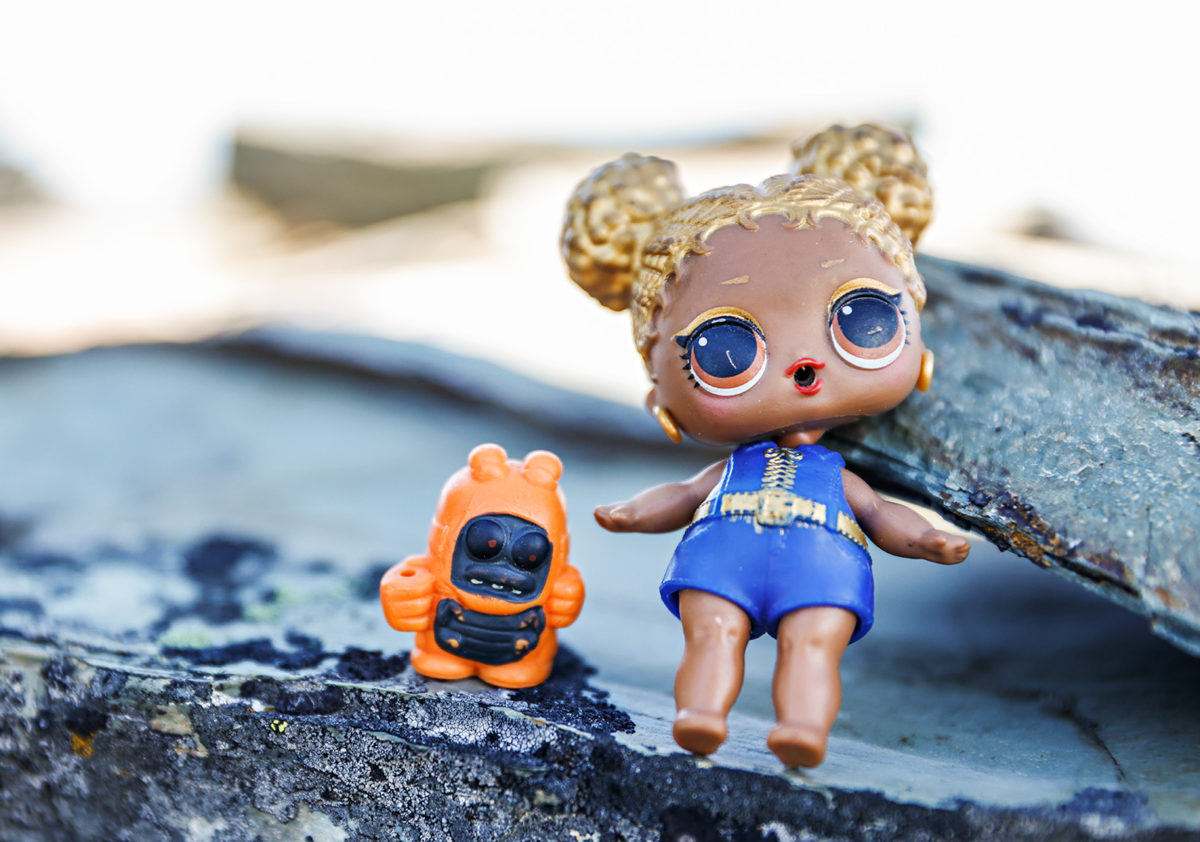
In addition to a passion that seems to only grow stronger with the passage of time, Robertson has four children, including 3-year-old twins, who push him to be his best self, and at the summit of Little Dog, he produces two dolls, belonging to his two oldest children, Kenny, 7, and Charice, 6.
“These are my good luck charms. They’ve been on more summits than most people,” he said. “My kids are always a good reminder to be safe in the mountains.”